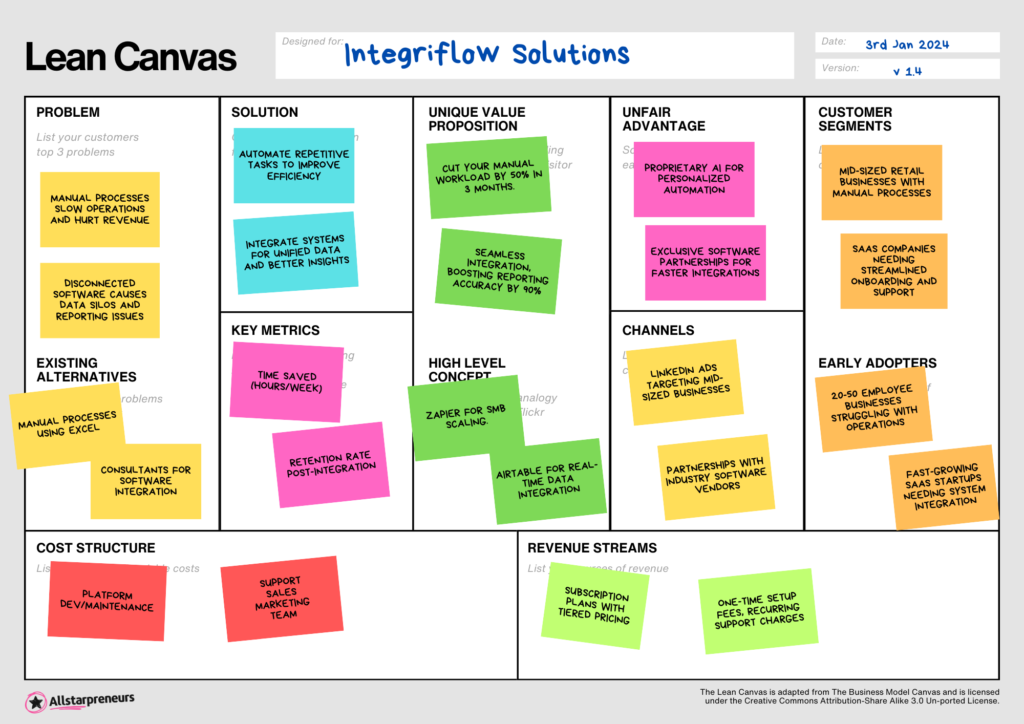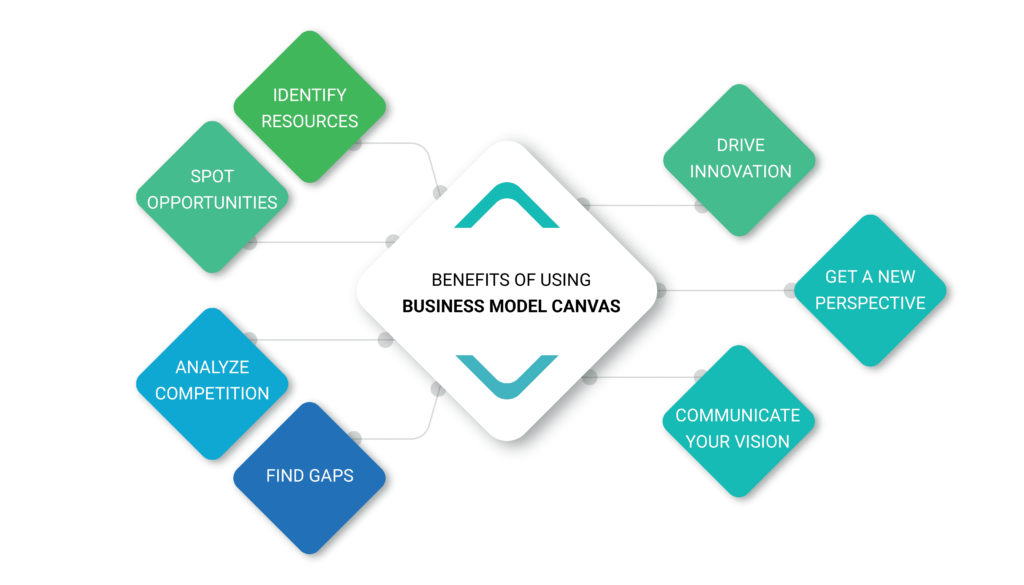
The Lean Canvas Model is a simple tool that helps entrepreneurs turn their ideas into successful businesses. It’s like a map that shows the most important parts of a business, making it easier to understand what to focus on. When using the Lean Canvas Model, business owners can quickly figure out the problem they are solving, their customers, and how they can make money. The goal is to keep things simple and clear, so it’s easier to make decisions and avoid mistakes.
In the Lean Canvas Model, you fill out one page with different sections, each covering an important part of your business. These sections help you think about things like your customer needs, the solution you offer, and your competition. It’s perfect for people who want to start a new business or improve an existing one. Instead of writing long plans, the Lean Canvas Model makes everything fit on a single page, helping you stay focused and on track.
What is the Lean Canvas Model? A Simple Overview
The Lean Canvas Model is a tool that helps people turn their business ideas into clear plans. It’s a simple one-page template that shows the most important parts of a business. Entrepreneurs use this model to figure out how to solve problems, reach customers, and make money. The Lean Canvas Model helps you keep your ideas clear and focused by breaking them down into different sections. Each section answers a question about your business, like “Who is your customer?” or “What problem are you solving?”
This model is perfect for new businesses because it’s quick and easy to use. Instead of writing long business plans, the Lean Canvas gives you a simple way to organize your ideas. It helps you see what works and what doesn’t, so you can adjust your plan as you go. The Lean Canvas Model is a great way to keep track of your goals and make sure you’re on the right path.

How the Lean Canvas Model Helps Entrepreneurs
The Lean Canvas Model helps entrepreneurs by giving them a simple way to test and improve their ideas. It’s like a map for your business, showing you where to focus and what to change. Entrepreneurs can see if their ideas are strong or need improvement by looking at the sections of the canvas. The Lean Canvas also helps entrepreneurs spot problems early. By focusing on key areas like customer needs and solutions, it’s easier to make decisions and move forward.
Another benefit of the Lean Canvas Model is that it saves time. Instead of spending months writing a big business plan, you can use the Lean Canvas to see if your idea works in just a few days. This helps entrepreneurs save energy and resources, letting them focus on things that matter most. If something isn’t working, they can make changes quickly without wasting time.
Breaking Down the Lean Canvas Model: Key Sections
The Lean Canvas Model is divided into sections that each focus on an important part of your business. These sections help you organize your ideas clearly. Here are the key sections of the Lean Canvas:
- Problem: What problem are you solving for your customers?
- Customer Segments: Who are your customers?
- Unique Value Proposition: What makes your solution different and special?
- Solution: What is your solution to the problem?
- Channels: How will you reach your customers?
- Revenue Streams: How will your business make money?
- Cost Structure: What are your business costs?
- Key Metrics: How will you measure success?
- Unfair Advantage: What makes your business hard to copy?
Each section helps you think about different parts of your business in a simple way. By filling out the Lean Canvas, you can quickly see if your business idea has potential.
Benefits of Using the Lean Canvas Model for Your Business
The Lean Canvas Model has many benefits for business owners. One major benefit is that it’s fast and easy to use. Entrepreneurs can create a plan for their business in just a few hours or days. Unlike traditional business plans, which take time and effort to write, the Lean Canvas lets you get straight to the point. It helps you organize your ideas and focus on what matters most without wasting time on unnecessary details.
Another benefit is that it’s flexible. As your business grows and changes, you can easily update your Lean Canvas. If you find that something isn’t working, you can adjust your plan quickly. This flexibility helps entrepreneurs stay on track and make smart decisions.
How the Lean Canvas Saves Time
- Quickly organizes your ideas.
- Helps test business ideas faster.
- Easily adjusts as your business grows.

Step-by-Step Guide to Creating Your Lean Canvas
Creating a Lean Canvas is simple and quick. Here’s a step-by-step guide to help you get started:
- Start with the Problem Section: Think about the main problem your customers face. Write it down clearly so you can focus on how to solve it.
- Identify Your Customers: Who are the people facing this problem? List out the types of customers you want to serve.
- Think About Your Solution: What is your solution to the problem? Write down how your product or service will help customers.
- Add Your Unique Value Proposition: This is what makes your solution stand out. Explain why customers will choose your solution over others.
- Figure Out Your Revenue Streams: How will your business make money? Will it be through product sales, subscriptions, or something else?
As you work through each section, you’ll begin to see how everything fits together. The Lean Canvas will help you clarify your ideas and plan your business more effectively.
Common Mistakes to Avoid with the Lean Canvas Model
While the Lean Canvas is a great tool, there are some common mistakes to avoid. These include:
- Being too vague: It’s important to be specific when filling out the sections. If you’re too vague, it’s hard to understand what your business is about.
- Ignoring competition: Make sure to think about what makes your business different from others. If you ignore your competition, you may miss opportunities to improve.
- Not testing your ideas: The Lean Canvas is meant to be a tool for testing. Don’t fill it out and forget about it—keep testing your ideas and making improvements.
By avoiding these mistakes, you’ll make the most of the Lean Canvas Model and create a strong foundation for your business.
Real-Life Examples of the Lean Canvas Model in Action
Many successful businesses have used the Lean Canvas Model to plan and grow their ideas. For example, companies like Airbnb and Dropbox used the Lean Canvas to quickly test their ideas before fully launching. By focusing on their customers’ needs and the problems they were solving, they were able to build successful businesses. The Lean Canvas helped them stay focused and make smart decisions along the way.
When you use the Lean Canvas, you’re following in the footsteps of many successful entrepreneurs. It’s a simple tool that can help you turn your ideas into reality.
Conclusion: Why the Lean Canvas Model is a Must-Have for Entrepreneurs
In conclusion, the Lean Canvas Model is an invaluable tool for anyone looking to start or grow a business. Its simple, one-page layout helps entrepreneurs quickly organize their ideas, focus on what matters, and identify potential problems early. By breaking down a business plan into key sections, the Lean Canvas ensures that no important aspect is overlooked, making it easier to stay on track and make informed decisions.
Whether you’re just starting out or looking to improve an existing business, the Lean Canvas Model allows you to test and adapt your ideas quickly. Its flexibility and focus on customer needs make it a powerful tool for entrepreneurs of all levels. With its ease of use and effectiveness, the Lean Canvas Model is a must-have for anyone serious about building a successful business.





